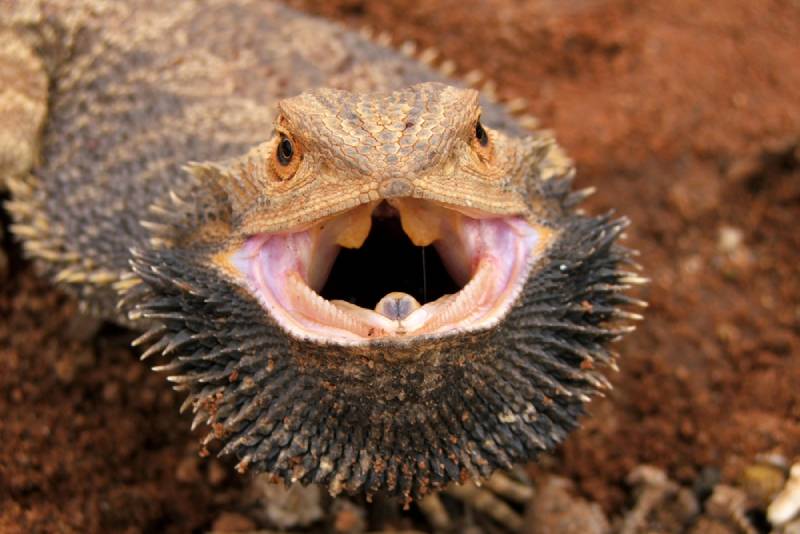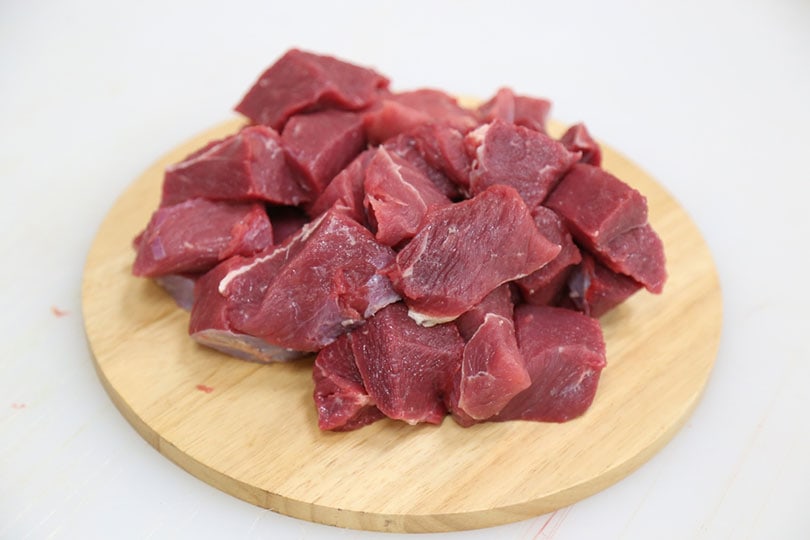Male vs. Female Bearded Dragon: Differences, Similarities & FAQ
Updated on
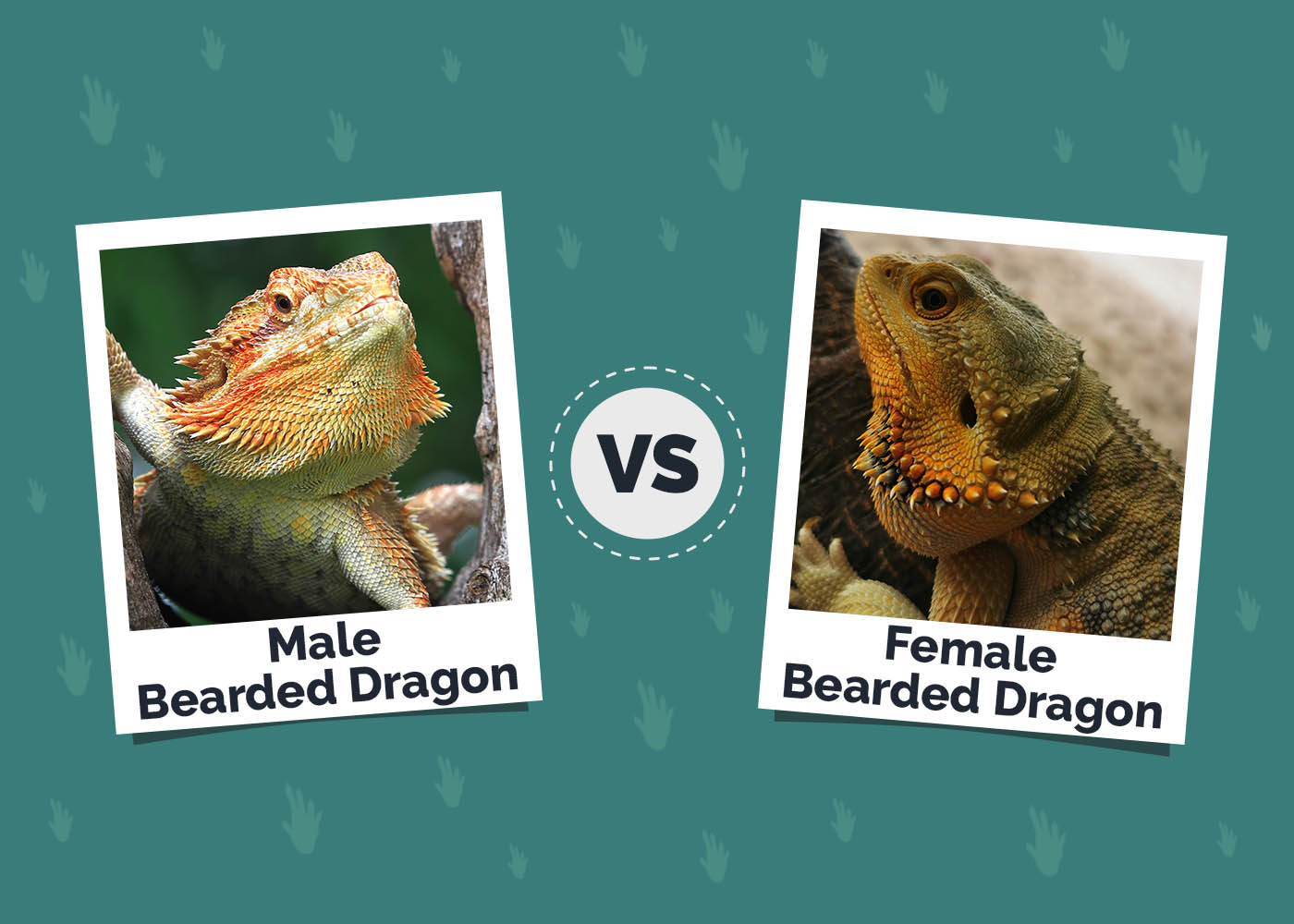
Click to Skip Ahead
For every reptile, including bearded dragons, it’s typically difficult to distinguish males from females. Both tend to appear and behave similarly. However, there are differences that you should be familiar with. Knowing your bearded dragon’s sex is essential for taking good care of them, understanding their behavior, and ensuring that they are healthy.
But how can you distinguish the sexes in bearded dragons when they look so similar?
Male bearded dragons are typically large, with larger heads and tails and a wider cloacal opening than females. The femoral pores are also more visible in males than in females, and they tend to be more aggressive and territorial.
Read on to learn more about male vs. female bearded dragons, including their differences, similarities, and frequently asked questions!
Visual Differences

At a Glance
- Average height (adult): 19–24 inches
- Average weight (adult): 14–17.6 ounces
- Average height (adult): 16–19 inches
- Average weight (adult): 14–17.6 ounces
Bearded Dragons 101
Bearded dragons are among the most popular exotic pets available. These lizards have a lifespan between 10 and 15 years and are typically low-maintenance animals. They are social and friendly and like to be around humans, though they aren’t as playful as some other pet animals.
Bearded dragons are typically between 16 and 24 inches long and are mainly active during the day. They need plenty of space to roam freely, so a large vivarium is required to keep them comfortable. The vivarium should be solid, easy to clean, and well-ventilated and be at the right temperature for your bearded dragon to thrive.
Like most reptiles, bearded dragons are cold-blooded, which is why they rely on external sources to keep themselves warm. Their vivarium should have a warm area with a temperature between 100°F and 107°F and a cool area with a temperature between 71°F and 79°F. The humidity inside the vivarium should be between 40% and 60%.
It’s best to decorate the space with stones, sand, and branches to create and replicate a natural environment for your bearded dragon to unwind and relax.
Most bearded dragon species are omnivorous, meaning they consume plant- and meat-based foods, including insects, rodents, vegetables, berries, and fruits. These reptiles may also require regular water and supplements to stay healthy and grow strong in captivity.
Male Bearded Dragon Overview
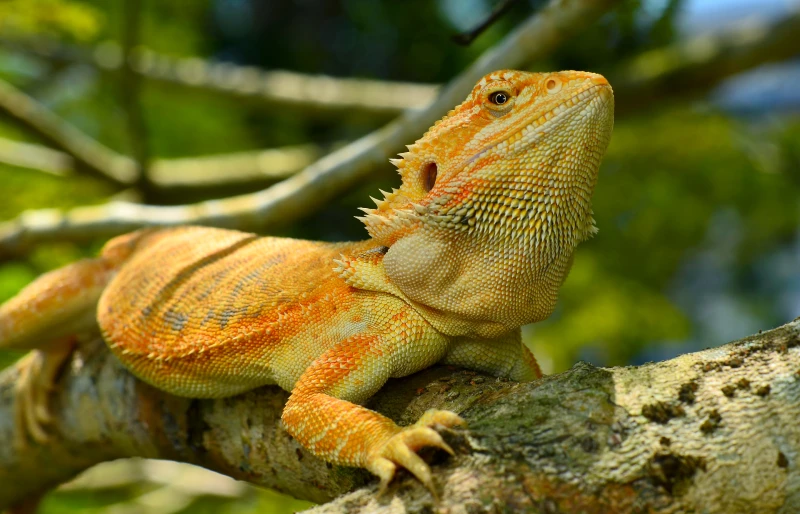
Male bearded dragons are commonly larger than females, typically reaching between 19 and 24 inches in adulthood. They can come in various colors, color morphs, and patterns and generally make good, docile pets.
Personality / Character
Male bearded dragons are usually more aggressive and territorial than females. They tend to exhibit these behaviors to scare other males and impress females. They may also fight for food and occasionally attack the females if they don’t act submissive toward them.
When scared, these reptiles will open their mouths, raise their chins, and puff their beards to appear larger. It’s also common for male bearded dragons to release a hissing sound to try to scare their potential threats. They like to quickly bob their heads as a sign of dominance, especially during the breeding period.
Health & Care
Male bearded dragons don’t require much veterinary care; as long as you provide them with proper living conditions and ensure that the temperature, humidity, diet, and supplements are well-balanced, your bearded dragon should be healthy and happy.
They will need their nails trimmed every few weeks and yearly vet checks to prevent possible health issues. You should bathe or soak them a couple of times a week, as that will help them stay clean, reduce shedding, and be more hydrated.
- Coccidiosis
- Renal disease
- Nutritional secondary hyperparathyroidism
- Periodontal disease
- Follicular stasis
- Adenovirus 1
They can also transfer diseases such as Salmonella to humans, so it’s always important to wash your hands before and after handling a bearded dragon.
Breeding
During the breeding period, the male bearded dragons will start courting the females by pounding their feet on the ground, bobbing their heads, and waving their arms. After finding a suitable female mate, male bearded dragons will pursue them by biting the back of their neck during mating.
- Doesn’t require much veterinary care
- Low maintenance
- Various colors and color morphs
- Aggressive
- Territorial
Female Bearded Dragon Overview
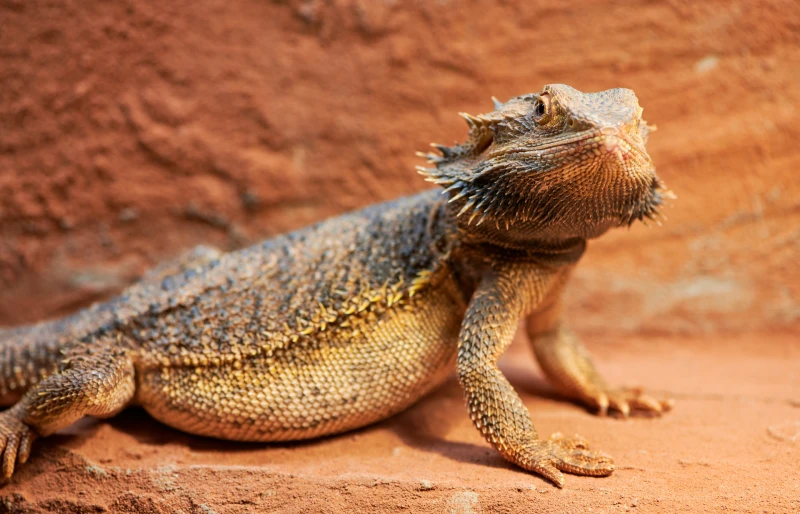
Female bearded dragons are physically similar to males, so it’s hard to tell them apart. They are typically smaller than the males, though, reaching between 16 and 19 inches. They are also more social and friendly and less aggressive than their male counterparts, which is why they may be more suitable pets.
Personality / Character
Personality-wise, female bearded dragons are more friendly, social, and docile than males. They are less territorial and aggressive, which makes them better pets, especially for families. The only time when female bearded dragons may act aggressively is when multiple females are housed together.
Like the males, they are mainly active during the day, typically climbing around or resting in a nice, warm spot.
Health & Care
When it comes to the health and care requirements of female bearded dragons, they’re the same as their male counterparts. The females are generally healthy and need yearly vet checks to prevent possible health issues.
They also require a couple of weekly baths or soaks and regular nail trimming. Similarly to male bearded dragons, the females are predisposed to the same health conditions and problems.
Breeding
During the breeding period, female bearded dragons tend to act submissively as they patiently await a male’s courtship. After the male starts courting and the two bearded dragons mate, the female becomes impregnated and lays eggs. Female bearded dragons have an excellent storage capacity for sperm, enabling them to lay up to two separate clutches of 11–30 eggs after just one mating session.
- Friendly
- Docile
- Low maintenance
- Various colors and color morph
- Multiple females together may house-in and act aggressively
Similarities Between Male and Female Bearded Dragons
Male and female bearded dragons have many similarities, which is why many people have trouble telling them apart.
Physically, both female and male bearded dragons look the same; the only difference is their size. Both sexes also contain femoral pores and have similar patterns and colors. Overall, you probably wouldn’t be able to tell a beardie’s sex by just looking at them.
As for their behavior, male and female bearded dragons don’t act too similarly, as males are more territorial and aggressive. However, it’s common for bearded dragons to “switch their sex,” and females may act as males and vice versa, making it almost impossible to distinguish the two.
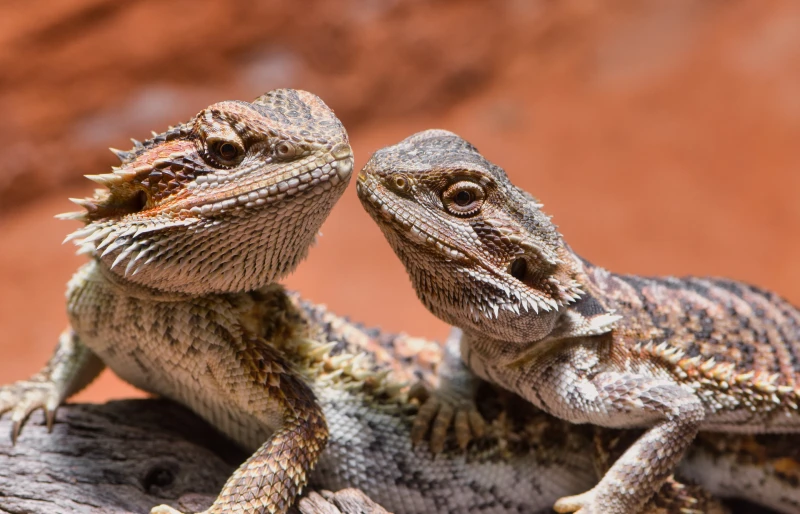
Differences Between Male and Female Bearded Dragons
Although male and female bearded dragons are quite similar, they do have a few differences.
For one thing, male bearded dragons have visible hemipenal bulges, which are somewhat similar to penises in mammals. Males are also significantly larger than females, with longer tails, larger and wider beards, bigger heads, and wider cloacal openings. The females are smaller, with a narrower and shorter tail, smaller head, longer and narrower beard, and narrower cloacal openings.
Both males and females have femoral pores, though they’re small and almost invisible in females and large and visible in males.
Here’s a chart of a few of the biggest differences between male and female bearded dragons.
| Features | Male Bearded Dragon | Female Bearded Dragon |
| Cloacal Opening | Wide | Narrow |
| Tail Base | Wide | Narrow |
| Femoral Pores | Large, visible | Small, almost invisible |
| Beard | Large, wide | Long, narrow |
| Head | Large | Small |
| Size | 19–24 inches | 16–19 inches |
Frequently Asked Questions About Bearded Dragons
Is It Okay to Touch Bearded Dragons?
Many people unfamiliar with bearded dragons are unsure whether it’s okay to touch them. Bearded dragons are typically docile and gentle animals, so it’s okay to touch and hold them. However, if you want to do so, there are a couple of things that you should know first:
- When lifting a bearded dragon, ensure that you do it gently.
- Support your bearded dragon’s body weight.
- When handling your bearded dragon, ensure that you do it in a calm, peaceful environment.
- Keep the holding sessions brief.
- Wash your hands every time you touch your bearded dragon, both beforehand and afterward.
- Never hold your bearded dragon tightly or roughly.
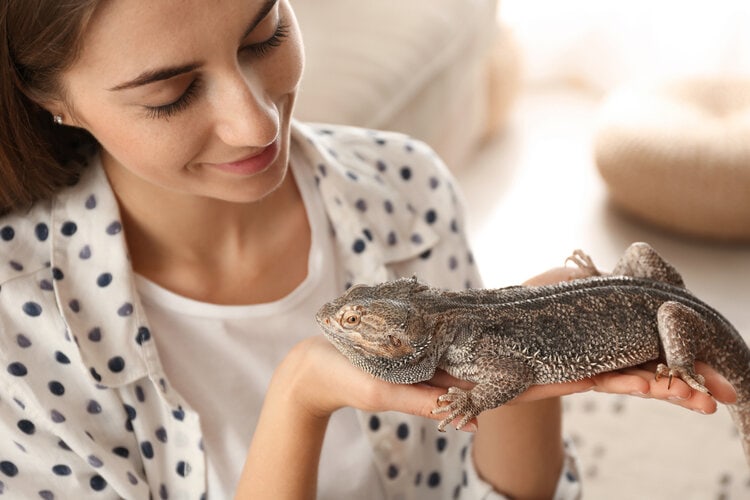
Do Bearded Dragons Recognize Their Owners?
Bearded dragons can recognize their owners if they spend time together. They can typically distinguish your scent and voice, which is how they can recognize you among other people. Just be aware that bearded dragons are not your typical pets, and they don’t show love and affection like some other animals do.
However, bearded dragons can still form a strong bond with their owners. For example, many like to climb on their owners and to be held.
Which Gender Is Right for You?
As bearded dragons are quite similar, it comes down to your preferences when choosing the right sex for you. Most female bearded dragons are docile and friendly, which is why they are the most common options. However, male bearded dragons can also be excellent pets. The only difference is that they will require a slightly larger vivarium.
Overall, bearded dragons are gentle little creatures that are low maintenance, making them perfect for anyone who wants an exotic pet reptile.
Related Read:
- Bearded Dragon vs Leopard Gecko: The Key Differences (With Pictures)
- Iguana vs Bearded Dragon: The Main Differences (With Pictures)
Featured Image Credit: (L) Kurit afshen, Shutterstock | (R) Tay Chee Keong, Shutterstock

